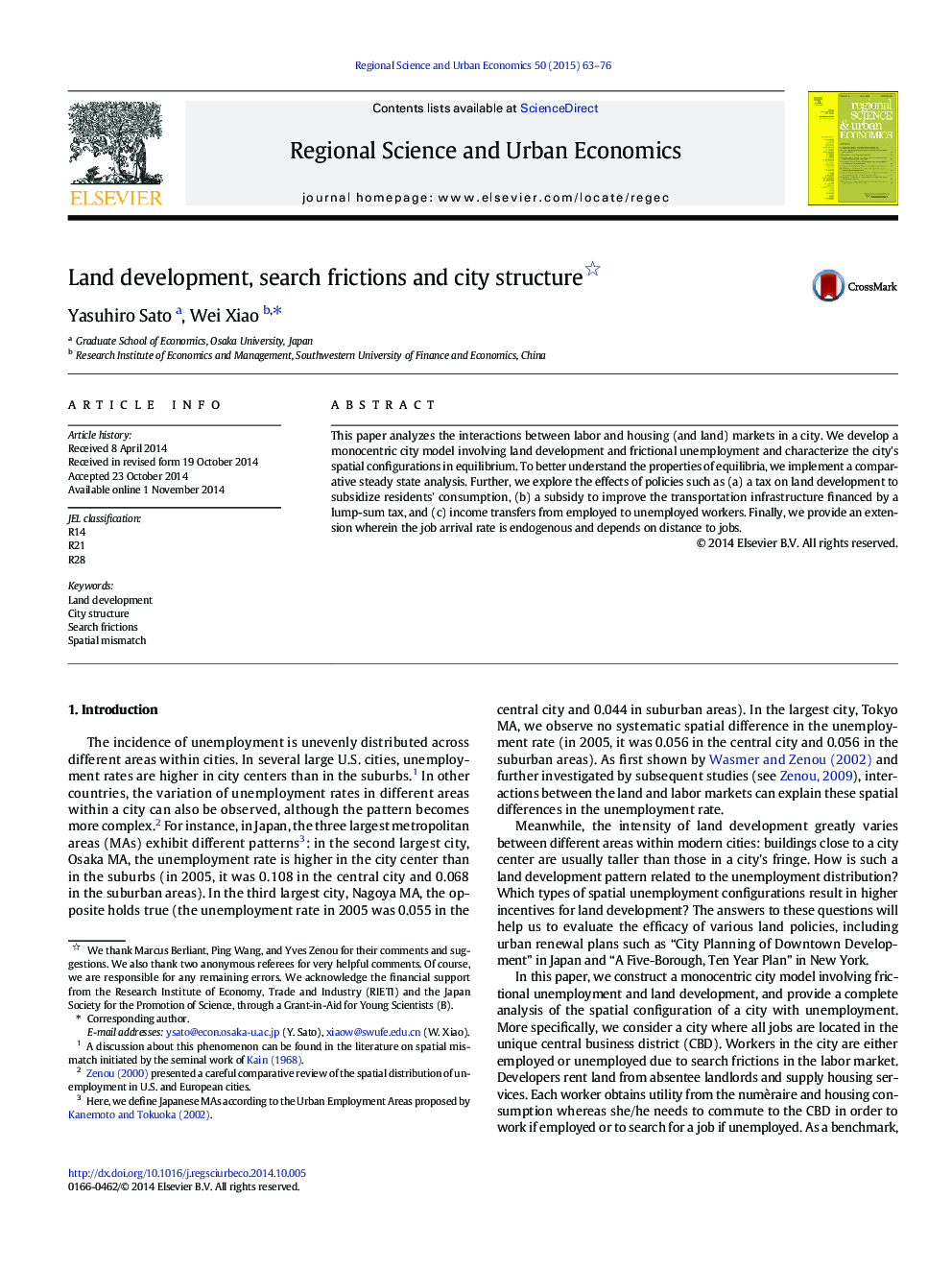| Article ID | Journal | Published Year | Pages | File Type |
|---|---|---|---|---|
| 983698 | Regional Science and Urban Economics | 2015 | 14 Pages |
•This paper analyzes the interactions between labor and housing (and land) markets in a city.•We then characterize different spatial configurations in the city.•We show how equilibria are affected by land and labor market parameters.•We further explore the effects of policies.•We extend our model by assuming that the job arrival rate depends on the distance to jobs.
This paper analyzes the interactions between labor and housing (and land) markets in a city. We develop a monocentric city model involving land development and frictional unemployment and characterize the city's spatial configurations in equilibrium. To better understand the properties of equilibria, we implement a comparative steady state analysis. Further, we explore the effects of policies such as (a) a tax on land development to subsidize residents' consumption, (b) a subsidy to improve the transportation infrastructure financed by a lump-sum tax, and (c) income transfers from employed to unemployed workers. Finally, we provide an extension wherein the job arrival rate is endogenous and depends on distance to jobs.
